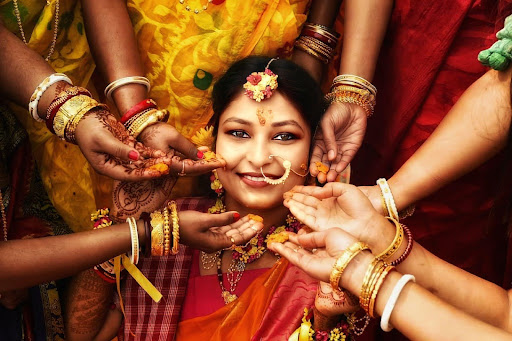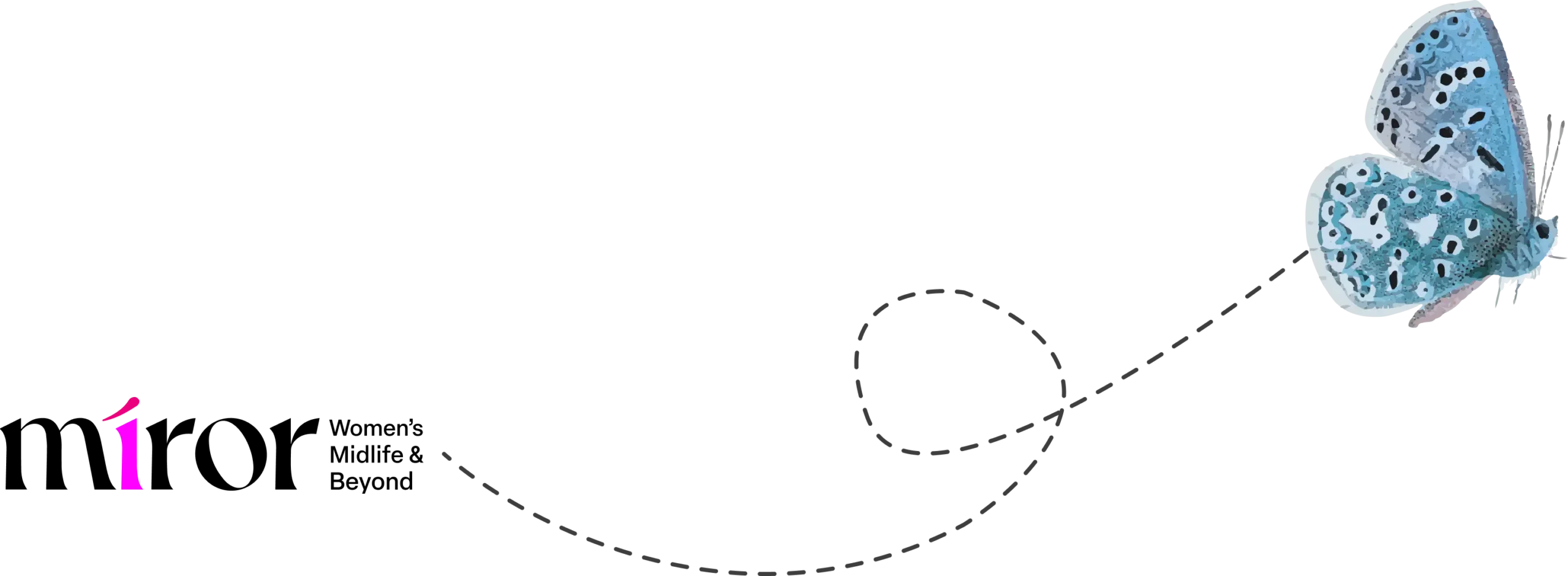
Menarche and Menopause: Milestones in a Woman’s Life
Difference between Menarche and Menopause
Women experience several significant physiological changes throughout their lives, two of the most pivotal being menarche and menopause. Understanding these milestones is essential for comprehending the female reproductive system and its lifecycle. In this blog, we will define menarche and menopause, distinguish between them, and explore the differences that characterize these crucial phases.
What is Menarche?
Menarche is the term used to describe a girl’s first menstrual period. It signifies the onset of reproductive capability and typically occurs between the ages of 9 and 15, with the average age around 12. Menarche is a major milestone in puberty and marks the transition from childhood to adolescence. It is initiated by hormonal changes, primarily the increase in estrogen, which triggers the development of secondary sexual characteristics such as breast development and pubic hair growth.
Menarche is not just a biological event; it also has cultural, emotional, and social significance. For many girls, the onset of menstruation is accompanied by mixed emotions, ranging from excitement to anxiety. It is often seen as a rite of passage into womanhood, with varying cultural rituals and beliefs associated with it.
What is Menopause?
Menopause, on the other hand, is the term used to describe the cessation of menstrual cycles, marking the end of a woman’s reproductive years. Menopause is typically diagnosed after 12 consecutive months without a menstrual period and usually occurs between the ages of 45 and 55, with the average age being around 51.
This phase is preceded by perimenopause, a transitional period that can last several years and is characterized by irregular menstrual cycles and various symptoms such as hot flashes, night sweats, and mood swings.
Menopause signifies the end of fertility and is a natural part of aging. It results from the decline in ovarian function and the subsequent decrease in the production of hormones like estrogen and progesterone. While it marks the end of menstruation, it also brings about significant changes in a woman’s body, including increased risk of osteoporosis and cardiovascular disease.
Menarche and Menopause
While both menarche and menopause are crucial stages in a woman’s reproductive life, they represent opposite ends of the reproductive spectrum. To distinguish between menarche and menopause, it’s important to understand their respective roles and impacts on a woman’s health.
Aspect | Menarche | Menopause |
Onset Age | 9 to 15 years | 45 to 55 years |
Biological Process | Beginning of menstruation and reproductive capability | End of menstruation and reproductive capability |
Hormonal Changes | Rise in estrogen and puberty hormones | Decline in estrogen and progesterone levels |
Reproductive Impact | Start of ability to conceive | End of fertility |
Cultural Perception | Celebrated as a rite of passage | Often stigmatized and shrouded in silence |
Societal Perspectives and Discourse on Menarche and Menopause
Menarche: Celebrated Milestone of Womanhood
Menarche, the onset of menstruation, has historically been a significant cultural milestone, often celebrated as a symbol of a girl’s transition into womanhood. In many cultures, menarche is marked with rituals and ceremonies that honor the girl’s entry into a new phase of life. These celebrations vary widely, but they commonly emphasize fertility, maturity, and the continuity of life.

For instance, in certain Indigenous communities, menarche is celebrated with elaborate ceremonies that include family gatherings, feasts, and traditional practices aimed at preparing the girl for her future roles as a woman and mother. Similarly, in some Hindu cultures, a girl’s first menstruation is marked with special rites and rituals, often involving the community and extended family. These practices not only honor the girl but also educate her about her reproductive health and responsibilities.
The celebration of menarche serves several purposes:
- Affirmation of Fertility and Maturity: It acknowledges the girl’s ability to bear children in the future, which is often linked to her social and familial roles.
- Education and Preparation: It provides an opportunity to educate the girl about menstruation, reproductive health, and the changes she will experience.
- Community Involvement: It fosters a sense of community and support, as the girl’s transition is shared and celebrated by those around her.
Menopause: The Silent Transition
In stark contrast, menopause—the end of a woman’s reproductive years—has often been shrouded in silence and stigma. Despite its natural and universal occurrence, menopause has not received the same cultural recognition or celebration as menarche. Instead, it is frequently associated with aging, loss of fertility, and, in some cultures, a perceived decline in a woman’s social value and desirability.

Several factors contribute to the subdued discourse around menopause:
- Aging and Stigma: Menopause is closely linked to aging, a topic that many societies tend to avoid or view negatively. The association of menopause with aging can lead to feelings of invisibility and marginalization for women.
- Lack of Awareness and Education: There is often a lack of comprehensive education about menopause, both for women experiencing it and for the broader community. This knowledge gap can perpetuate myths and misconceptions, making it harder for women to navigate this life stage with confidence and support.
- Cultural Taboos: In many cultures, discussions about menopause and its symptoms are considered taboo, preventing open dialogue and the sharing of experiences. This silence can exacerbate feelings of isolation and misunderstanding.
The Growing Recognition of Menopause
In recent times, there has been a significant shift in societal attitudes towards menopause. Increasingly, women and advocates are calling for greater awareness and open discussion about this important life transition. This growing recognition is driven by several factors:
- Health and Well-being: Understanding the physical and emotional changes associated with menopause is crucial for women’s health. Addressing symptoms such as hot flashes, sleep disturbances, and mood swings can significantly improve quality of life.
- Workplace Support: As more women remain in the workforce into their 50s and beyond, there is a greater need for workplace policies that support women experiencing menopause. This includes flexible work arrangements, access to health resources, and an understanding of how menopause can impact work performance and well-being.
- Media and Advocacy: The rise of social media and advocacy groups has given women a platform to share their experiences and raise awareness about menopause. Celebrities and influencers openly discussing their menopausal journeys have also helped normalize the conversation and reduce stigma.
Bridging the Gap: Menarche and Menopause
The disparity in societal attitudes towards menarche and menopause highlights broader cultural perspectives on women’s health and aging. While menarche is celebrated as a sign of growth and potential, menopause has often been seen as a decline. However, this narrative is changing as more women and advocates emphasize the importance of viewing menopause as a natural, significant, and valuable stage of life.
Promoting a balanced and respectful discourse on both menarche and menopause can lead to:
- Increased Awareness: Greater understanding of these life stages can help dispel myths and provide accurate information to women and their communities.
- Empowerment: Women can feel more empowered and supported as they navigate the transitions of menarche and menopause, knowing that their experiences are recognized and valued.
- Health and Well-being: Comprehensive education and open dialogue can lead to better health outcomes, as women are more likely to seek and receive appropriate care and support.
Key Takeaway
Understanding menarche and menopause is essential for promoting women’s health and well-being. Knowledge about these phases enables women to better prepare for the changes and seek appropriate medical advice and support. It also helps in debunking myths and reducing the stigma associated with menstruation and menopause, fostering a more informed and compassionate society.
Educating girls about menarche can lead to better menstrual hygiene practices and early detection of menstrual disorders. Similarly, awareness about menopause can help women manage symptoms more effectively and make informed decisions about treatments such as hormone replacement therapy (HRT) or lifestyle changes to mitigate health risks.
Menarche and menopause are two defining milestones in a woman’s life, each with its unique set of characteristics, challenges, and implications. By understanding the difference between menopause and menarche, we can appreciate the complexity of the female reproductive system and the transitions women undergo. Whether it’s navigating the first menstrual period or embracing the changes of menopause, informed and supportive environments are key to ensuring women’s health and empowerment throughout their lives.
Citations

Sruthakeerthi Shenoy






